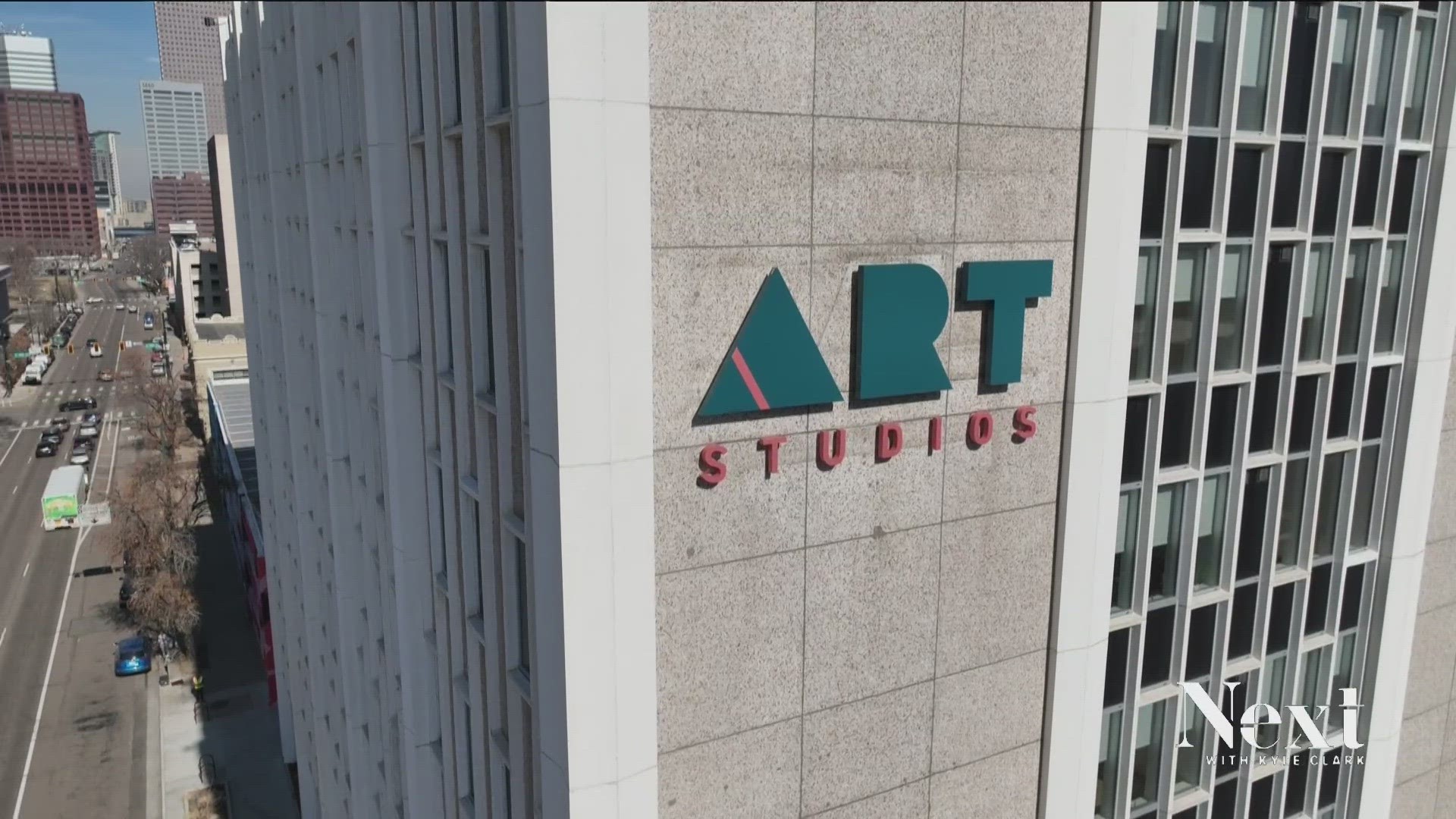DENVER — With more employees working from a home office, commercial properties are in need of turning offices into homes.
Converting a vacant commercial building into residences requires a special craft.
“Art Studios is a 192-unit studio apartment building. It was formerly The Art Institute,” Melissa Rummel, vice president of development for Nichols Partnerships, said.
At 12th Street and Lincoln Avenue near downtown Denver, an old art college is now a rental property with 245-square-foot units going for $1,250 or more.
The units used to be art classrooms and have a lofted bedroom to be crafty with the space.
“We care about architecture a lot. It’s nice to preserve old buildings. It’s more sustainable to repair than to tear down and build new,” Rummel said.
Art Studios is the third conversion that Rummel has been a part of. Her company converted Turntable Studios next to Mile High Stadium from a hotel into studio rentals, and also a medical building in Uptown.
And all three were done with zero incentives from the city or state.
“Moving forward, projects like this won’t pencil without incentives,” Rummel said.
State Rep. Alex Valdez, D-Denver, has proposed HB-24-1125, which would set aside up to $5 million a year starting in 2026 for companies to receive tax credits to convert commercial space into residential.
“This particular zip code is one of the most affected zip codes as far as vacancy is concerned,” Valdez said from an office building overlooking downtown Denver. “If you have a lot of empty space and a lot of people who want to rent space, we’re trying to bring them together.”
His proposal would limit one developer to no more than $3 million for a project.
The Art Studios conversion cost $55 million.
“This is a $55 million project and $3 million is just enough to, maybe, actually move the needle, but anything less than that doesn’t move the needle,” Rummel said. “You generally need incentives from anywhere from 20 to 40% of the total project costs in order to make these things pencil today.”
The money that would be set aside would come out of TABOR refund dollars. By providing tax credits, it lowers the state’s revenue, which means fewer TABOR refund dollars would exist. TABOR refunds are currently only projected to exist through 2026. If there were no TABOR refunds, this would have to be funded through general fund dollars.
“This is using money that we’re going to refund anyway towards projects that we know Coloradans are looking to have solved by us,” Valdez said.
But if Rummel could do three projects like this without incentives, why are any needed at all?
“What we hope to end up with is solving an issue, not a bailout, but really an opportunity to fill space, to repopulate downtown Denver to get Denver abuzz again, which I think is on everybody in Denver’s mind,” Valdez said.
“I don’t view it as a bailout,” Rummel said. “I don’t see it as a bailout, I see it as an incentive to help bring more people downtown and to get people living downtown.”
She believes incentives are needed with costs where they are today.
“Interest rates were lower three years ago when we started the project. Construction costs were lower three years ago when we started the project,” Rummel said. “My worry about the bill is that it’s not enough.”
She mentioned Calgary, which has a program that offers up to $10 million for any one project converting commercial to residential.
“If we don’t do it, and we don’t advocate for change of use and a reuse of an existing building, we’re going to end up with a lot of vacant buildings in our downtowns that have no use,” Rummel said.
The bill has its first hearing on Feb. 29.
More reporting by Marshall Zelinger:
SUGGESTED VIDEOS: Latest from 9NEWS

